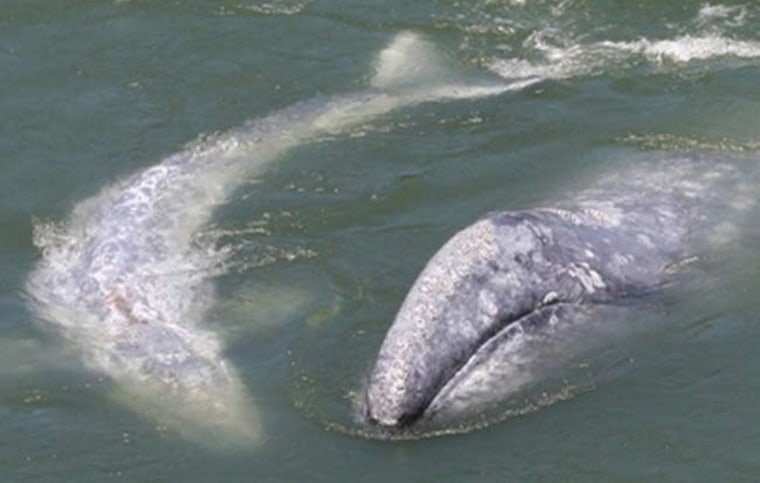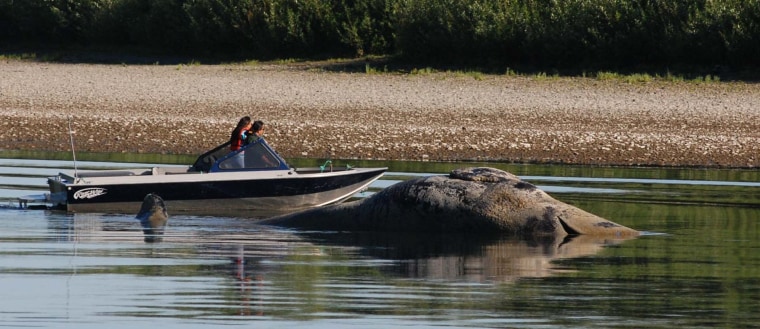A wayward gray whale that had been on Northern California's Klamath River for more than a month, staying even after her calf went back to the ocean, died Tuesday morning after beaching on a sandbar.

A cause of death will be determined after researchers test samples of the body, said Sarah Wilkin of the National Oceanic and Atmospheric Association. She was part of the team studying the whale and trying different tactics to send it back to the Pacific, three miles away.
"Based on the photos and everything, her fat layer looks good, so we don't think she starved to death," Wilkin said. "There's something else going on."
The mother and her 15-foot calf entered the river in late June during their northward journey from breeding grounds in Baja California up to Alaska.
Rescuers spotted what they believed to be the calf swimming back to sea on July 23 after weaning from the mother.
The whale had become a local celebrity of sorts in the area, with people gathering daily on a bridge spanning the river to get a look at the creature.
"It's very sad," said Thomas O'Rourke, chairman of the Yurok Tribe, whose reservation lines the banks of the river south of Crescent City, Calif. "It started to become a part of the community."
Researchers took measurements of the dead whale, and the animal was expected to be buried later on the gravel riverbank during a private ceremony held by the Yurok Tribe among tall willows near the spot where it beached.
O'Rourke visited the dead whale and said a prayer for its new journey. He believes it might have been showing its calf a place it had known in its youth.
"This is the farthest up river I have ever seen a whale," he said. "They come into the mouth regularly, the bottom end of the estuary. I believe there is a message there, and we are still yet to understand."
Ashala Tylor, a freelance photographer, has been taking pictures of the whale for weeks, and said she saw the whale alive Monday night.
"I stayed until about 2 a.m. this morning and she was swimming around the bridge," Tylor said Tuesday. "When I came back this morning she was on her side as dead as can be. I was shocked when I saw her."

The tactics used to try to scare the mom back to sea included blasting the sounds of its main predator, killer whales; spraying a water cannon at her and banging on pipes in the water.
Killer whales, also known as orcas, were given their menacing names by fishermen who saw them forming packs to attack whales, even ones as big as grays. The one on the Klamath was estimated to be 45 feet long and weigh 40 tons.
The Yurok Tribe last month told msnbc.com that while the river had some shallow parts "she could easily get out if she wants to."
Why would the pair have even entered the river in the first place? The tribe said they might have been trying to "avoid a predator such as a killer whale or a great white shark."
Or, it added, "the highly intelligent mammals could also simply be curious."
The last sighting of a whale on the Klamath was in 1989, the tribe said, and that one left without incident.
Gray whales travel long distances between calving and mating along the coasts and then feeding in the Arctic and sub-Arctic regions.
The population of gray whales off the Pacific coast are recovering after nearly being hunted to extinction for their blubber in the 1900s. Their population is estimated at around 20,000.
